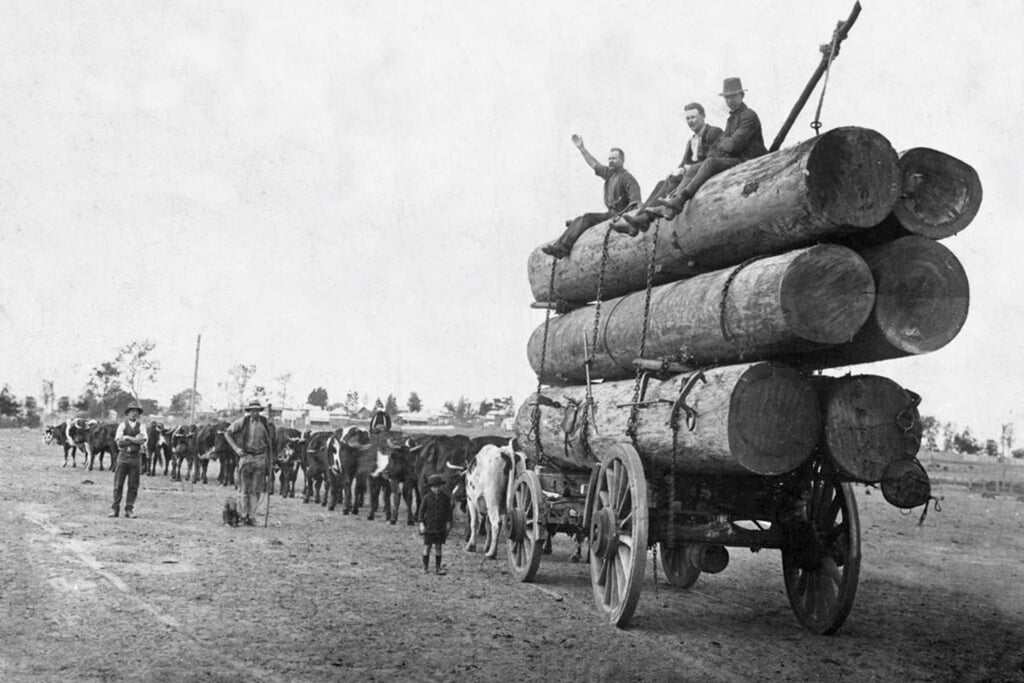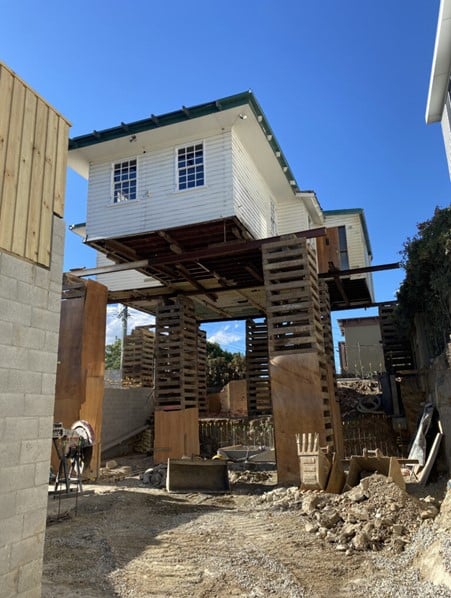Why We Build with Timber and Countries like Brazil Don't
When I used to live in Brazil, a question that sparked my curiosity was why we were building houses in reinforced concrete and masonry while countries like USA and Australia used timber instead.
TIMBER/WOOD
10/15/20233 min read


Timber framing became a popular construction method in the 19th century. The abundance of timber in Australia made it an affordable and readily available building material.
The earliest houses in Australia were built by the first settlers, who arrived in 1788. These houses were made from locally sourced materials such as timber, wattle, and daub.


Source: www.forestrycorporation.com.au
Timber-framing or lightweight framing is most commonly seen in residential construction up to 2 storeys. It involves constructing a house frame using stud walls, posts, beams and joists. The structure can sit on a slab on ground, steel or timber posts.
If you walk around Brisbane, you will also see a lot of old houses sitting on concrete stumps. Those are the traditional Queenslanders, a style created in the late colonial era.

A question that sparked my curiosity when I used to live in Brazil was why we were building houses in reinforced concrete and masonry while countries like USA and Australia used timber instead.
After doing some research I managed to come up with a couple of reasons:
First and foremost, labour in Brazil is cheap if compared to Australia. The average salary of a labour in Brazil is 10 reais an hour while in Australia this number can go up to 35 dollars or even more.
In other words, a house made of reinforced concrete or masonry can take up to months or even years to be built in Brazil and it would still probably be within budget. Whereas in Australia, the house has to be done in a matter of weeks to be within budget and you can only achieve that with a lightweight framing system.
Secondly: Despite the fact that a lot of the earliest houses in Brazil were made from locally sourced timber, this type of construction has been always seen by the Brazilian culture as a low-quality construction system.
Thirdly: Most of the engineering courses in Brazil are heavily focused on reinforced concrete structures. I can tell from personal experience that I had only one subject in Timber Design and it only scratches the surface. Also, there is no Brazilian Standards nor codes that can guide engineers and builders on this type of construction. Bear in mind that these 2 reasons could actually be a consequence of timber framing not being very popular in the country.
Lastly, Brazil has one of the highest deforestation rates in the world. Therefore, it would have to implement a sustainable forest management before it can start producing massive amounts of timber for construction.
Now going back to Australia
I think the reasons we have been using timber for decades are becoming a little bit clearer.
Firstly, Labour is expensive. Therefore, it makes sense to adopt lightweight framed construction as it is a relatively simple system and trade skills and availability are abundant. I mean, not so much nowadays.
It is a flexible method that allows for modifications and additions to be made easily in the future.
You can even raise a house if you want.


They are suited to both off-site and on-site fabrication and have relatively low transport costs. Not to mention that the footings are way smaller than any other type of construction method.
Secondly, the most common type of timber used in Australia is Radiata Pine, which is native to the central coast of California, but widely available in Australia and New Zealand. If designed properly, timber framing can be used in Cyclonic regions and even meet the requirements of higher Bushfire Attack levels.
Australia has 8 main climate zones, ranging from tropical zones in the north to cold zones in the south. Even though a combination of different materials could be ideal in certain climates, timber framing is still at the forefront of construction. Timber is a renewable resource, and if managed sustainably, it can be an environmentally friendly choice.
In summary, whether you like it or not, timber framing is the most popular house construction method in Australia and I can’t see it going away any time soon. Like any other materials, it has its downsides but if designed, built and maintained properly, some of timber framed houses can last over a century.


